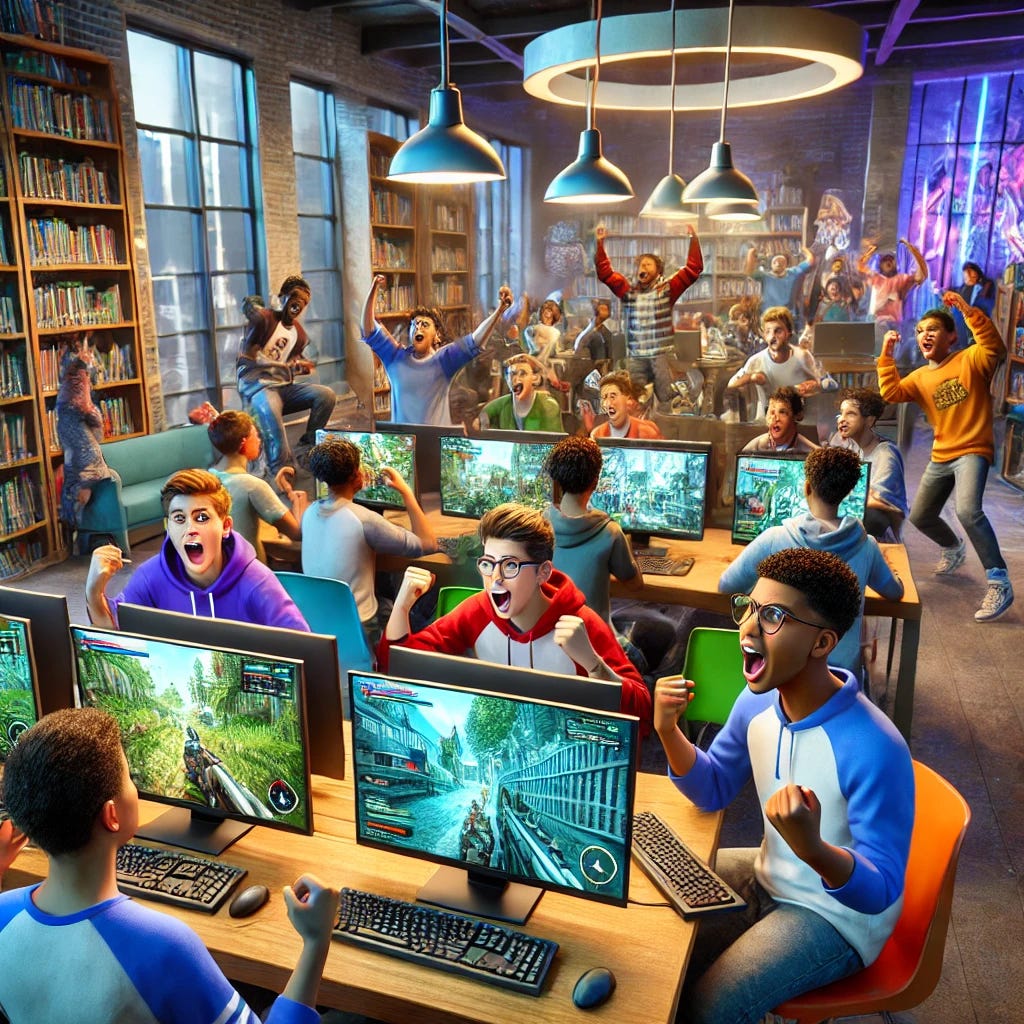It seems like Jonathan Haidt is on everyone’s TBR these days. The social psychologist and professor is the author of numerous nonfiction bestsellers, most current of which is The Anxious Generation1. This book has Massachusetts parents (excuse my language here) by the balls. My district is offering a PD book group as well as a discussion group for parents. In the town where I work at a public library, it’s the community-wide read. Haidt examines the role of technology, particularly social media, in the mental health crisis facing American youth, identifying four foundational harms of a technology-based childhood and four solutions parents and communities can implement to reduce the mental health damage caused by Big Tech.
I’ll be completely honest- while I’ve listened to a ton of podcasts and videos about Haidt’s work, I haven’t actually read The Anxious Generation. BUT I find Haidt to be a charismatic, thoughtful speaker, ready with jokes and statistics that boost his ethos on an intellectual and personal level. I’m hoping to dive into The Anxious Generation and another of his books, The Coddling of the American Mind, over April break when I have a little more mental space to read nonfiction.
What really turned me on to Haidt was his conversation on the Armchair Expert podcast with Dax Shepard. (The entire episode is over 2 hours long but it’s worth the listen.) Haidt, Shepard, and co-host Monica Padman discussed the impact of a variety of technologies on brain development, but one of Haidt’s comments stuck with me: “If you gamify, gamify, gamify, then the rest of life is incredibly boring, and that includes talking to people.”
When I heard this quote, I thought about the group of seventh grade boys that gamed in the library every morning from bus drop-off to the warning bell. For 20 minutes every morning, this group of about 30 boys played all kinds of racing and Roblox-like games, asking for join codes and exploding with excitement (or anger) and the games’ twists and turns. On the one hand, it was endearing to see students find ways to spend time with friends on other teams and build community around a shared interest. On the other, I could see how in-game losses boiled over into 7th-grade-boy meltdowns at 7:50am. Not a mindset conducive to learning. Some students were so fixated on the game that when I tapped them on the shoulder to check if they heard the warning bell, they waved me off and spoke to me as if I was an annoying peer. The games were a vortex for some students, blurring their senses of time and social boundaries.
My concern for how morning gaming was impacting these students’ days as well as a lack of respect for the space by several students in the group led me to put a moratorium on morning gaming in the library. Students were upset at first, but they adapted to the new normal pretty quickly. I don’t doubt that they’re playing the same games in their homerooms, but perhaps with fewer people, the stakes and stimulation aren’t as high.
I don’t regret my decision. Since I ended morning gaming, a different, quieter crowd of students started hanging out in the library in the morning, working on homework and browsing for books. They appreciate not having to contend with a rambunctious crowd of boys hopped up on Dunkin Donuts and Fortnite. At the same time, I wish there was a way I could leverage those boys’ energy and their love of gaming and turn it into… something.

The type of games these students were playing in the library were all about instant gratification and beating “the boss,” releasing what Haidt refers to as “quick dopamine.” That hit of dopamine from winning a round or shooting down an opponent keeps players coming back for more, and the more time students spend with quick dopamine experiences, the more dopamine it takes for students to achieve the same rush. In other words, it leads to a dopamine addiction.
Haidt contrasts quick dopamine with slow dopamine: dopamine that’s released after hard work and the executive functioning required for delayed gratification. There are a number of games that lead to a slow-dopamine brain response, such as role playing games (RPGs), the most famous of which is Dungeons and Dragons. I’ve been playing RPGs online for about four years, and nothing beats the feeling of building a character arc over several sessions that ends in a full-circle moment of growth. In an article for School Library Journal, Bebarce El-Tayib touted the benefits of RPGs for student learning, as many games require problem-solving, teamwork, math, and executive functioning skills as well as a sustained application of these skills over multiple sessions. SLJ has recently started reviewing educational games alongside books, signaling that gaming in the library is here to stay.
Will RPGs be “the answer” for my 7th grade boys? Maybe. Or maybe allowing the boys to keep gaming with a better cleanup routine is the best I can do given the structure of our school day. Maybe Jonathan Haidt would agree with my gaming moratorium, but I’m more curious about what you have to say!
Have you read The Anxious Generation? What did you think?
What role do you think gamification (of all kinds, not just online) should play in education?
If you work in libraries, how do you incorporate students’ gaming interests into your programming?
I’d love to hear your comments below! 🧡
I am a Bookshop affiliate, which means I will earn a small commission on any books you purchase through my affiliate links. Bookshop is a great alternative to Amazon and supports independent bookstores.



I am forwarded this to my brother. His kids (my nephews) are addicted to devices at 8. One of them can’t get off without a fit and any activity that isn’t a video game leads to “I’m bored.” I’m always so sad that they’re not experiencing childhood.